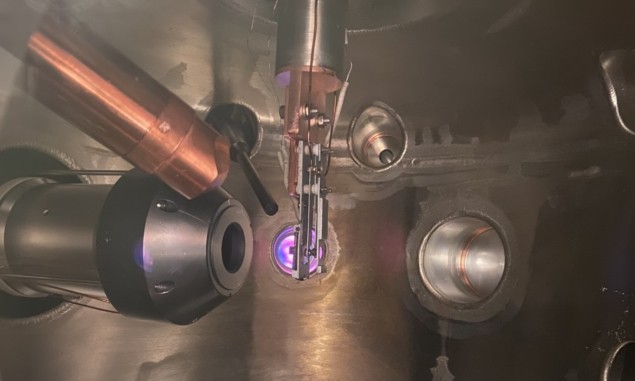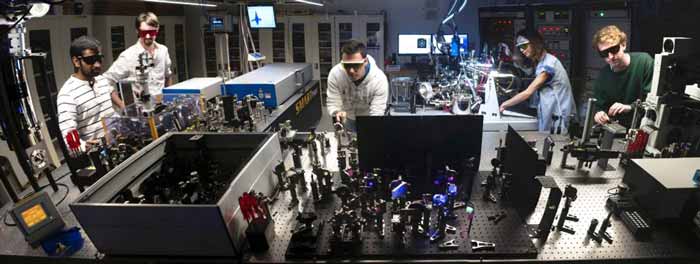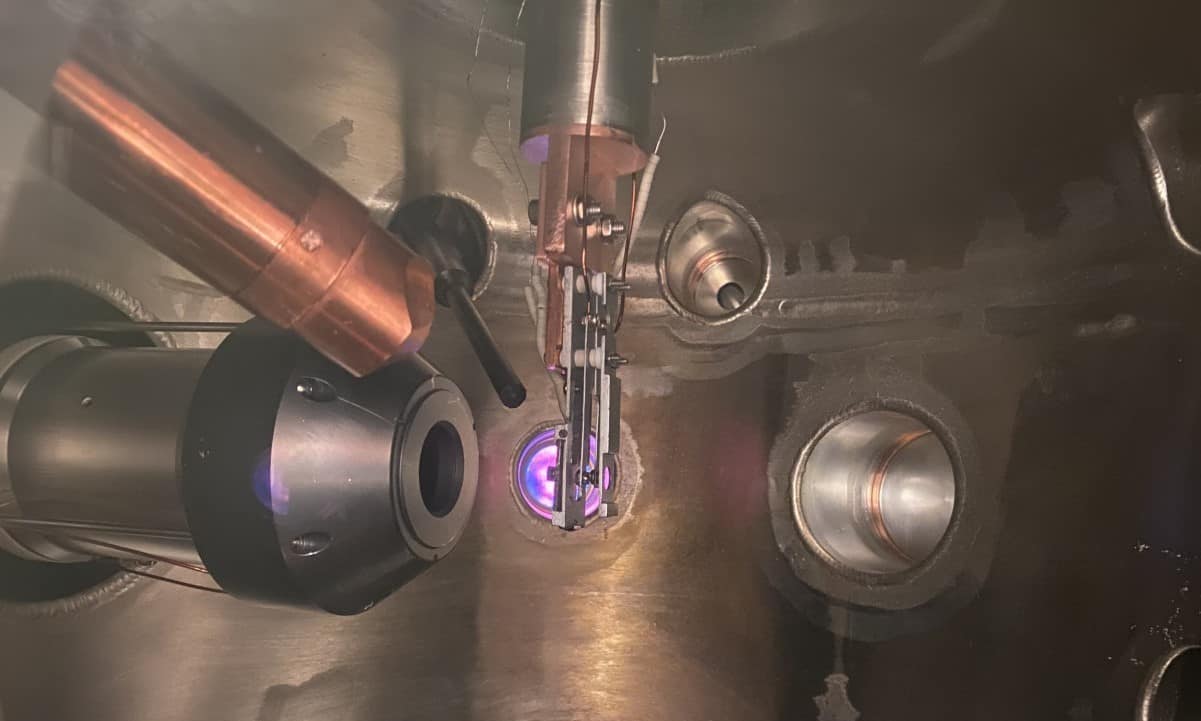
A collaboration involving experimental and computational chemical physicists has revealed new clues as to how electrons in titanium dioxide interact with light. The researchers used two-photon photoemission (2PPE), a technique utilizing ultrafast laser pulses, to distinguish electrons localized at surface defects from electrons in the bulk. The findings could have a lasting impact on the design of semiconductor devices with photocatalytic applications, improving the efficiency at which sunlight is converted into more usable forms of energy.
Titanium dioxide is an important material for solar technologies: it can be used to generate hydrogen via solar water splitting (where sunlight dissociates hydrogen and oxygen from water molecules) or as an electron transport layer in next-generation solar cells. It is also well-suited to experiments under highly controlled ultra-high vacuum conditions, leading to titanium dioxide being considered a “model surface” for the study of metal oxides.
However, the role that defects in the crystal structure – and electrons bound to them – play in the photocatalytic performance of titanium dioxide in “real life” systems remains to be fully determined.
Protected from chemical reactions
“Discerning the individual, light-driven processes of photocatalysis is challenging,” Alex Tanner, a PhD student in Geoff Thornton’s group at University College London and the lead author of a paper describing the latest research, explains to Physics World. “But those defects in the bulk are more abundant and are protected from chemical reactions compared to those at the surface, making them important to understand.”
With this motivation, Tanner and colleagues did 2PPE measurements using ultrashort laser pulses, lasting only femtoseconds (10-15 s), to improve our understanding of the nature of electrons in titanium dioxide. The technique is underpinned by the quantum mechanical view of light as comprising discrete packets of energy called photons. When the laser beam is focussed onto the sample, an initial photon, known as the pump, can be absorbed by an electron, increasing the electron’s energy. A second photon (the probe) then further excites the electron, ejecting it from the material and into a vacuum system, where the electron’s kinetic energy is measured.
Revealing excitation pathways
Because of the photon energies involved in this work, the depth from which the electrons were ejected was up to around 5 nm, which was greater than in previous studies.

‘Movies’ of electron motion in solar cell made using femtosecond laser
The results suggest that electrons localized at the titanium dioxide surface are bound more strongly to defects than those a few atomic layers deeper into the material. This indicates an alternative excitation pathway for electrons in the bulk. To assist with this interpretation, the group of Annabella Selloni at Princeton University used computational methods. Tanner credits his collaborators for further confirming the findings: “[Princeton chemist] Bo Wen created precise models of our system that replicated our experiments. This allowed us to confirm our experimental intuition and provided a level of detail not possible from experiment alone.”
By showing how electrons localized at the bulk defects may play a role in photocatalysis, the work represents an important step towards control over the properties of titanium dioxide and other solar materials.
Full details of the research are reported in Physical Review B.
